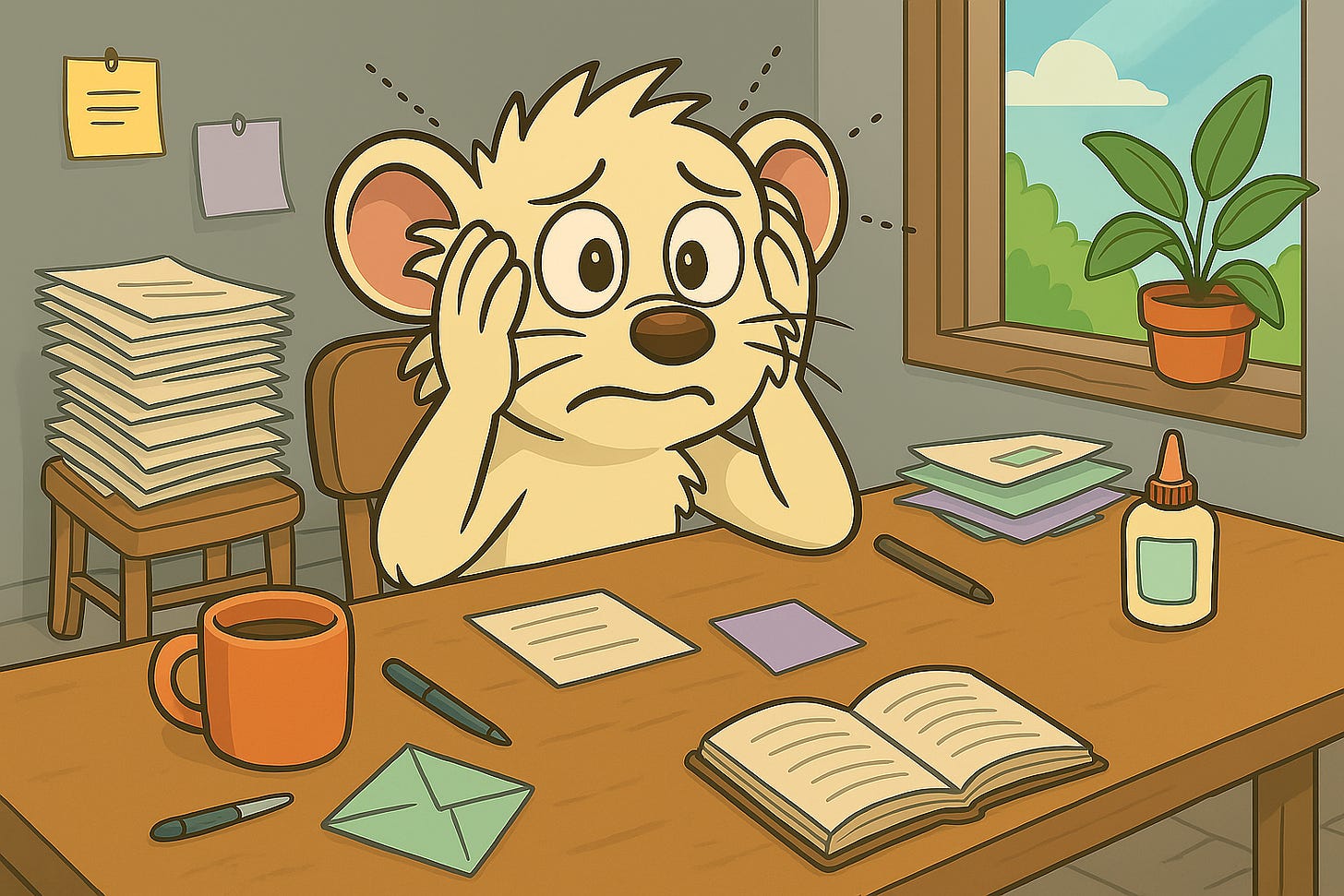Setting Up an ADHDers Space: From “Everything Everywhere” to “Ah, Now I Can Think”
Simple room tweaks that clear mental bandwidth fast.
You scan your home office and it looks like a tornado hit. Yesterday’s coffee mug, unopened mail, a half‑finished craft project, pens (and pen caps) everywhere. Your “important” papers are in a teetering stack on the chair (because if you file them, you’ll forget them). Yet now that everything is visible, it’s impossible to focus. You sit down to work, but your brain pings from the receipts on the desk, to the books on the floor, to the wall of sticky notes. Where do you even start?
It’s not just you. Living (and working) in chaos when you have ADHD is common. There’s a real paradox at play: “If everything’s visible, I remember it. But if everything’s visible, I can’t think.” In other words, hiding things in drawers equals out‑of‑sight, out‑of‑mind. However, leaving all the reminders in view equals visual overload. The result is mental gridlock and constant stress, not a character flaw or “laziness.” It’s how the ADHD brain’s memory and attention systems are wired.
(Psst, at the end of this issue, paid subscribers can download this week’s printable worksheet with quick steps to turn these tips into action!)
Why this ADHD space paradox happens
Working memory sits at the heart of the paradox. If your brain struggles to keep information in mind, you rely on seeing objects to remember them. That’s why many adults with ADHD report needing visual cues (leaving bills out, keeping tools in plain view) to remember tasks and belongings. Research confirms that working‑memory deficits are common in ADHD. Visual reminders fill the gap.
The flip side is the brain’s limited capacity to filter. Disorganization and clutter place a heavy load on attention systems. Every object in your field of view tugs at your focus. For the ADHD brain, which already has fewer attentional “guards,” this extra load can be a deal‑breaker. The more objects on your desk, the harder your brain works just to ignore them.
Clutter also amplifies stress. One study found that people living in messy homes had higher daily cortisol levels, suggesting that visual chaos keeps the nervous system on alert. Chronic cortisol elevation fuels anxiety and can make it even harder to initiate tidy‑up routines, trapping you in a cycle of overwhelm.



